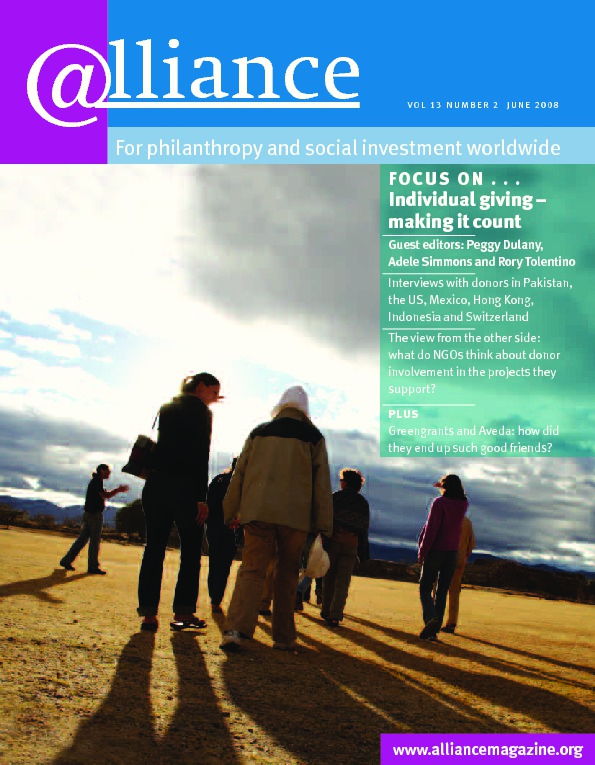One thing all philanthropy commentators seem to agree on is that giving by wealthy individuals is increasing – not just in the US and Europe but across the world, with countries like India and China showing particularly rapid growth. And it’s likely to increase even more dramatically in the next decade or so.
In a world where cash-strapped governments are unwilling or unable to raise taxes, this influx of private money could make a big contribution to solving social problems the world over. But will it? Is there anything we can do to ensure that it is well used and really does contribute to the long-term solution of problems in a way that provides a decent life and justice for all the world’s people?
If wealthy people everywhere turned to philanthropy and used their money as creatively and thoughtfully as the donors interviewed for this issue of Alliance, it would surely start to create ‘not just ripples but powerful tides’, as Paul Schervish of Boston College Center on Wealth and Philanthropy has put it.
There is a school of thought that holds that private philanthropists are giving away their own money and it’s up to them what they do with it. And that is of course true as far as it goes. Seen this way, philanthropy seems a bit like a socially conscious consumer spending choice. But needs are great and the problems urgent. ‘While philanthropists certainly have a right to determine what they would like to respond to,’ says Rory Tolentino, ‘I would like to think that responsible philanthropy tries to gather information, listens to voices close to the ground, and determines how to respond on the basis of the information gathered and the viewpoints heard.’
But doing philanthropy well isn’t necessarily easy. How do you listen to the voices close to the ground? Most of the donors interviewed for this issue of Alliance are members of the Synergos Institute’s Global Philanthropists’ Circle – and they have clearly found this valuable, both inspiring and practically useful. But the GPC comprises just 70 or so families. What about all the countless other donors and potential donors who don’t have access to this or a similar resource? What is there in the way of inspiration and help and support for them?
This issue of Alliance looks at some of the different resources that are available for donors and some of the opportunities for collaboration, which must surely present one of the best options for people wanting to have more impact with their giving. In Alliance Online we present a first attempt at a global list of such resources. This is far from complete, but we hope people will tell us about other resources so that we can add to it. Given the rapid growth of our field, this is likely to be an ongoing process.
Caroline Hartnell
Editor, Alliance






Comments (0)